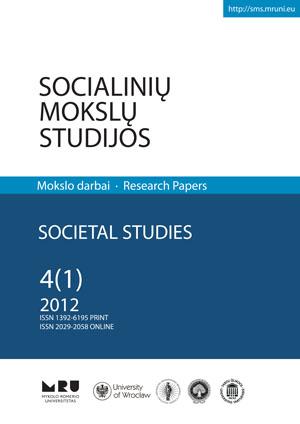Prezidento įgaliojimų trukmė JAV 1787 m. Konstitucijoje
Presidential Term Limits in the 1787 Constitution of the United States of America
Author(s): Mantas VaraškaSubject(s): Social Sciences
Published by: Mykolas Romeris University
Keywords: President; presidential term limits; 1787 US Constitution; constitutional principles; 1787 Philadelphia Convention
Summary/Abstract: The present article explores the problem of the presidential term limits in the early constitutional history of the United States. During the 200 years of practice, over 50 persons have served as the US presidents. Most of them completed their terms of office in full compliance with the constitutional requirements. Nevertheless, some were impeached (Andrew Johnson, Bill Clinton), or attempted to serve more than two terms, violating the unwritten custom (Franklin Delano Roosevelt) and inspiring amendments to the Constitution (1951). The facts listed above and the continued discussions on how to improve the US presidential term limit substantiate the discussion of the issue based on the analysis of the US constitutional background. The presidential tenure has already been investigated by such American scholars as Michael J. Korzi, Gideon Doron, Thomas H. Neale, Jorge Miguel Streb, and others. However, most of the previous research has been concentrated on the practice and political circumstances surrounding the presidential term limits. The present article is devoted to understanding the ideas on the presidential term limits expressed before the adoption of the 1787 US Constitution and looks into the thoughts and deliberations of the founding fathers of the US Constitution and the constitutions of individual states in the period of 1775 –1790. The knowledge about the ideas, intentions, and arguments as well as debates concerning various proposals on the term limits for the executive power in the US and the constitutional conventions of individual states allow understanding the connections between the presidential office, on the one hand, and the principles of sovereignty, separation of powers, and supremacy of the Constitution, on the other. This article, based on the teleological method, could be characterised as a compressed doctrine of presidential term limits that consists of the discussions of the 1787 Philadelphia Constitutional Convention and Federalists/Anti-Federalists during the process of ratification of the draft Constitution. The analysis of the thoughts of various American statesmen on the constitutional regulation of the executive tenure during the period of 1775–1790 demonstrates the importance and objectives of the executive tenure for the future of the US constitutional system. The early doctrine of the US presidential term limits consists of three steps, which could be defined as understanding, discussion, and finding the solution to the issue. The first step relates to the constitutional conventions of the states in the period of 1775– 1780, when the problem of the term limits of the executive was raised jointly with the issue of the powers of state governors’ institutions. Their relative modesty, in comparison to the terms and powers of other institutions, is explained by the fears of the American statesmen related to the dangers of monarchy and tyranny. The said feelings and the importance of
Journal: Socialinių mokslų studijos
- Issue Year: 4/2012
- Issue No: 1
- Page Range: 175-192
- Page Count: 18
- Language: Lithuanian

